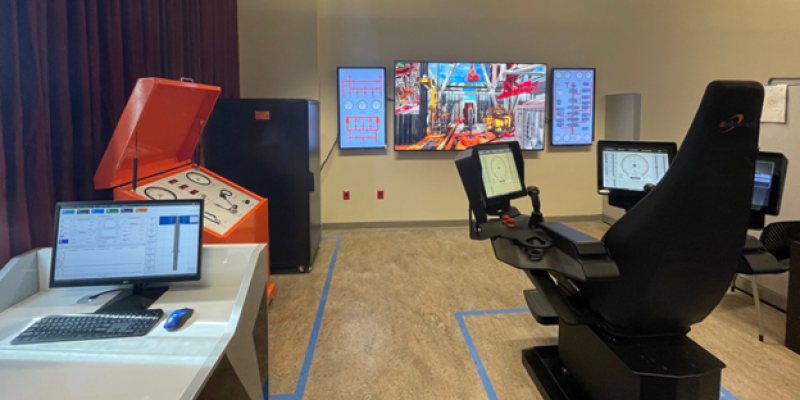Students enrolled in the Mork Family Department of Chemical Engineering and Materials Science department at University of Southern California (USC) will now have the opportunity to gain real-world experience in subsurface technology through practice with a drilling simulator, thanks to a donation from Chevron.
The simulator, valued at $150,000, was developed by Esimtech, a China-based company which specializes in developing petroleum engineering simulation systems for the oil and gas industry since 2009. The simulator features a cyber chair which replicates a real-world drilling chair via 3D simulation and allows users to experience different scenarios including:
- Calculate weight on bit during drilling; calculate pump pressure after pump is started; and calculate the fluctuating pressure during tripping.
- Simulate hard shut-in process and soft shut-in process.
- Simulate shut in with blowout preventer inside drillstring.
- Calculate shut-in drillpipe pressure of the drillstring with nonreturn valve.
- Simulate the pressure change of gas migration.
- Problems can be inserted at any time during exercise.
Students are able to complete exercises including tripping in/out, drilling, judgment/treatment of downhole accidents, shutting in, and well killing. Throughout these exercises, educators manage the control desk, where they are able to program different scenarios for students to work through.
Birendra Jha, assistant professor of petroleum engineering at USC, coordinated and purchased the equipment which will be used in his course “Formation Data Sensing with Well Logs.” The equipment will also be used in petroleum engineering lecturer Bradford Pierce’s course “Drilling Technology and Subsurface Methods.”
“This is meant to simulate what goes on at the time of drilling at a well site. We can encounter uncertainty at the time of drilling in the subsurface,” Jha shared in a press release. “For example, when we drill through subsurface rocks, the fluid pressure could be too high and if unchecked, it can lead to a safety issue, such as blowout, which is very dangerous,” he said. Learning the unique conditions which can lead to a blowout allows students to understand how to correct a potential blowout in real life.
Additionally, the simulator provides students with experience in renewable energy interactions including subsurface drilling, completion for energy storage, and renewable geothermal energy systems. “To access high heat at large depths in geothermal applications, the drilling operation has to go really deep, and the system gets exposed to high temperatures which we haven’t seen in regular oil and gas drilling,” Jha said.
Both undergraduate and graduate students will have the opportunity to use the simulator, whose use for years was restricted to those in the oil and gas industry.
“That really hampered the education of students, who get a degree and know the concepts as they are in the books, but then they join a company which then has to train them over months, if not a year, before they are ready,” Jha said. “Now companies will be aware our students learned on this simulator, which will reduce that training time.”


